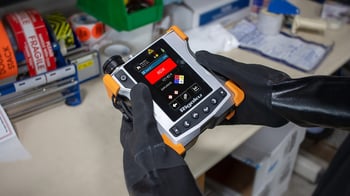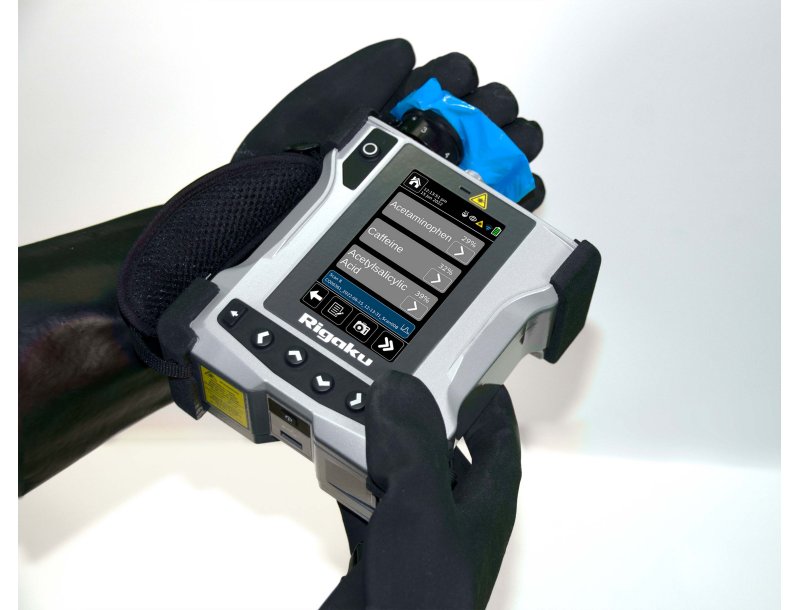ADVANCED 1064 nm RAMAN TO COUNTER IED THREATS IN TRANSPORTATION SCREENING
NEW EXPLOSIVE THREATS AND DEADLY NARCOTICS
In June 2018, in response to a foiled terrorist plot in Australia and long-standing concerns about improvised explosive devices (IEDs) containing powder explosives, the U.S. Transportation Safety Administration (TSA) announced and implemented new screening requirements. Passengers with carry-on baggage containing powdered materials in quantities above 12 oz (350 milliliters), the capacity of a soda can, could be subject to additional screening. U.S.-bound flights from 280 international airports are now required to implement these new screening requirements.
Combustible powders can present in many forms, from fertilizer to mining grade explosives. In addition to those that could pose a threat when used in IEDs, security operators in airports, law enforcement and customs operations are also concerned with illicit narcotics in powdered form. The transport of deadly narcotic opioids, such as fentanyls, pose dangers to screeners and passengers alike. Fentanyl derivatives, like carfentanyl, are lethal in quantities as small as a single gram. These opioids present danger to law enforcement when interdicted, or discovered. New Raman analyzers can play a role in preventing unnecessary or unintentional exposure of first responders, law enforcement, and the public, to this danger.
IMPROVED THREAT DETECTION FOR CHECKPOINT AND AIRPORT SCREENING
Security operators require enhanced detection capabilities to detect emerging and evolving threats. Cosmetics, spices, coffee and protein mixes are common powders and could be subjected to screening. New or additional checkpoint screening requirements slow screening operations and often result in longer lines and delays as passengers need to remove their carry-on powdered items or others. Security officers are challenged to screen and possibly re-screen substances to identify and determine that they are safe to carry onboard aircraft.
Advancements in mobile and handheld chemical threat identification technology can increase operational efficiency by streamlining passenger and baggage screening processes. Rigaku's 1064 nm handheld Raman is an example of an advanced, next generation technology providing rapid and actionable results required for airport and transportation hub security operations.

HIGH PERFORMANCE RAMAN SPECTROSCOPIC ANALYZERS
1064 nm HANDHELD RAMAN SYSTEMS
PORTABLE, RAPID AND ACCURATE IDENTIFICATION
Raman systems utilizing 1064 nm laser technology are currently available from Rigaku. The Rigaku CQL portfolio of 1064 nm analyzers detect the chemical structure and physical characteristics of its target. Preloaded algorithms then compare the sample's characteristics to the system's database for identification. The Rigaku portfolio of handheld Raman analyzers can identify and distinguish between closely related substances with its onboard and easily expandable database of over 13,000 chemicals and compounds. The system identifies and alerts operators to threat precursors, powders and threats presented in mixtures with benign materials. A vital addition to security screening operations, the Rigaku instrument processes and delivers results in less than 40 seconds to allow for rapid screening of passengers.
Rigaku CQL analyzers are able to screen powders and other substances through packaged materials such as polymer bags, glass bottles, flasks and vials. Being able to detect compounds through containers can be life-saving in the case of carfentanyl, of which can induce a coma or even death from mere contact with skin. Rigaku systems are portable and lightweight to support flexible screening operations and search. The system has been designed for ease of use and contains a comprehensive database of chemical signatures that is regularly and easily updated at no cost for the entire life of the product.
The onboard camera of the Rigaku Raman analyzer also supports law enforcement and the evidentiary collection process by allowing the operator to capture multiple pictures of the sample and surroundings. The images are stored with the analysis in a tamper-proof file. The camera can also be used to capture shipping and product barcodes to enhance investigations and the traceability of origin.
In addition to providing identification of substances in bulk form, the Rigaku CQL analyzer is the first field-ready handheld Raman tool to also provide trace analysis of narcotics and explosives. With the addition of QuickDetect Technology, users are provided automated colorimetric results for the detection of non-visible trace amounts in seconds.
RECOMMENDED PRODUCT
CQL Gen-ID HANDHELD 1064 nm RAMAN


.jpg?width=271&name=shutterstock_1185345862%20(1).jpg)